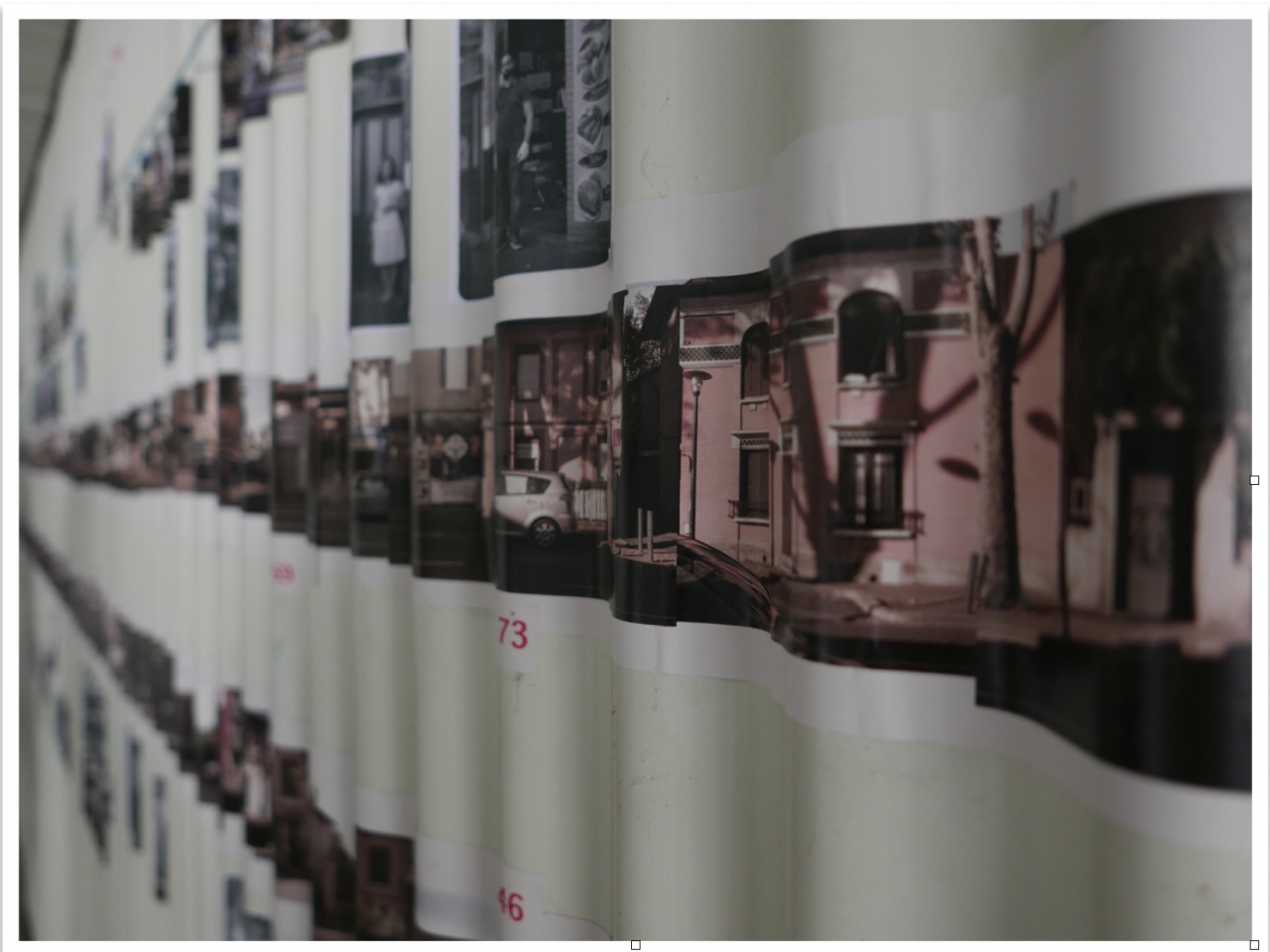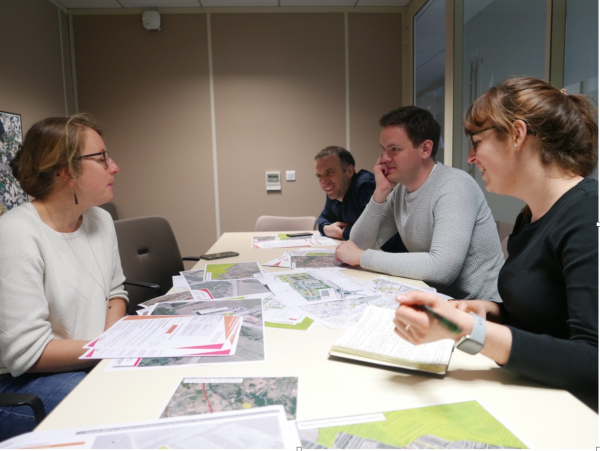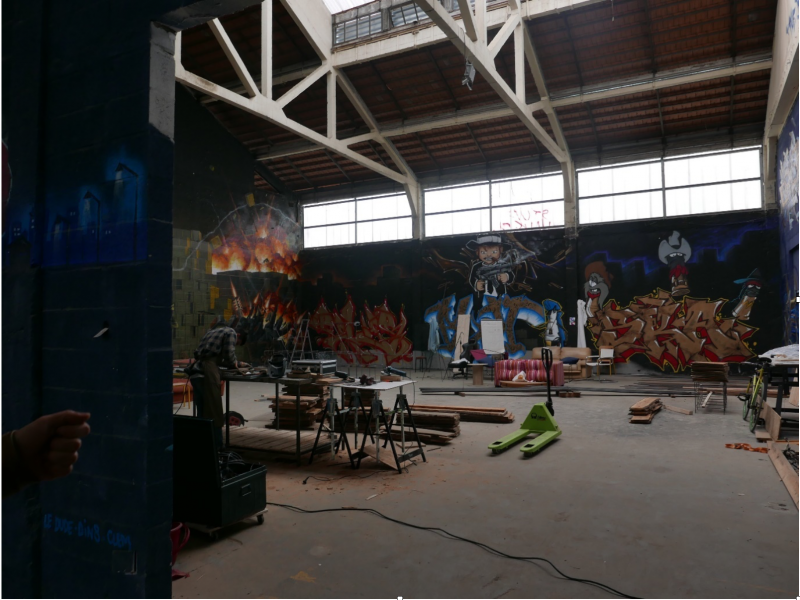
Our partners from Birmingam, with a strong three-person team, arrived in Toulouse at the end of February. The team that took part in Job Shadowing included Alice and Charis, both planning officers and Karolina, who in her daily work deals with local communities. Each of these people brought different inspirations and insights from that visit.
Learning and transferability by Alice
The similarity of both challenges and aims between the two cities makes Toulouse an exceptionally interesting case study. Like Birmingham, Toulouse faces a number of challenges including the need to respond to climate change, improve traffic congestion, and retain families in the city centre. Toulouse also shares similar aims to Birmingham: to support the local economy, improve the sustainable transport offer, and strengthen the green network.
Toulouse Metropole has a strong vision for the city and surrounding region. The city-wide masterplan rebrands Toulouse as ville rose, ville verte - a vision that seeks to enhance its built heritage, a reference to the pink hue of the city’s bricks, and its ability to adapt to climate change. During our visit we learnt of a variety of tools the city uses to meet this vision and aid sustainable growth. This included regeneration of brownfield land, design competitions and lengthy negotiation with developers. We also learnt of an innovative project that builds on the food-growing culture in the region to create an environment that fosters a new lifestyle centred around stewardship of land and food production.
Of all that we learnt it was Toulouse Metropole’s ability to reflect and learn from their experiences that resonated most. They carefully considered their successes such as a newly-completed linear park connecting the north of the city to its heart, and the delivery of a metro stop in the middle of agricultural land years before planned regeneration for the area had commenced. They paid similar attention to less successful elements of projects: a street with little natural surveillance, not sourcing materials locally, or poor social cohesion within a new development. This culture of learning is something all cities not only Birmingham should take forward particularly in the challenges that lie ahead.
In the picture: an exhibition at Job (cultural centre) which is an example of respecting historical importance of resident’s memories and their attachment to the history of local buildings. Historically, Birmingham struggled with valuing our historical buildings and we could learn a lot from Toulouse in this respect.
Reflecting on time in Toulouse by Charis

Having worked in Local Authority planning policy for over 10 years, I really welcomed the opportunity to share understanding with officers working in another Country. I feel it’s extremely important that planners look outside of their local areas to learn from others and embrace new ideas of working.
The visit involved a number of interesting site visits exploring ways in which planners, or ‘urbanists’ as they are called in France, from Toulouse Metropole are addressing key issues such as housing demand, climate change and the health of town centres. All of these challenges echo the issues we look to address through our own plans and strategies in Birmingham.
What I found most striking was the way in which they were positively addressing the housing need in Toulouse by delivering large scale development on the edge of the city through strong public / private partnerships. In comparison to large UK schemes, the key difference I noticed was the mixture of design and building styles within the sites. Whilst the overall site was planned as one, ensuring that all the necessary facilities and infrastructure are delivered such as metro stops, schools and community facilities, the site was divided into a number of smaller plots. For each plot a development brief was developed setting out what was required and what was negotiable. A competition was then run for each of these plots with the Public / Private partnership deciding which architect and developer best met their aspirations for the plot. All development would contribute to the cost of infrastructure in order to ensure the provision of roads and public realm was consistent.
This approach looked to deliver large scale sites that had character and individuality and provided spaces with a strong sense of identity, which is often a challenge when developing at this scale.
In another example called ‘Agriville’ they were looking to develop a large-scale housing scheme, which worked in unity with the surrounding remaining agricultural land, to provide residents with opportunities to build communities that have an active relationship with the land. For me this posed a real question: does this type of scheme work in France because they have a more active relationship with food production, or should we also be looking at ways our urban extensions can play a role in food production and fosters a different relationship with land?
The visit to Toulouse was a great opportunity to think creatively around challenges and explore ideas with others, providing plenty of food for thought for our own plans.
Lessons for Birmingham by Karolina
When visiting another city, it’s hard to avoid comparisons. Yet it’s important not to lose the perspective and remember that a three-day visit does not always show the full picture and it is hard to grasp the full context and background of certain pivotal decisions that shaped the cities landscapes. However, it has become apparent to us that there is a strong focus on social and economic innovation in Toulouse and the projects we had a chance to visit gave as a lot of food for thought.
Most notably, lessons from Toulouse seem to resonate the most with me where planning and regeneration was approached with the simple question – is this future proof? In the UK, we have a tendency to apply the same tried and tested methods only because our systems lean towards them. This is such a common approach to regeneration – cities tend to think that the aim of regeneration is to bring rough and difficult areas “up to speed” with the rest, whereas we should be thinking forward and planning for the next 50 years. What economy do we want to see people engage with, how do we turn crime hit drug dealing districts into well-functioning modern neighbourhoods and what economy would work best for them – not just how do we reduce the crime rate and unemployment or, worst, how do we make them look better so we are not accused of neglecting them… ?
Toulouse shows coherence and an absolute commitment to all their regenerated areas including the more problematic ones. They don’t seem to be fazed by challenges and their approach to regeneration is bold and often radical. The ideas from ‘Agriville’ to ‘Halles Cartoucherie’ http://halles-cartoucherie.fr/re-batir-le-projet-architectural/ and their “third place” concept took my breath away. I particularly loved seeing all the ideas around meanwhile uses put in practice in Cartoucherie.

In the picture: Cartoucherie. Meanwhile uses include furniture refurbishing workshop, club, theatre, cinema, food pop ups, and more.
The project ‘Dessine-moi Toulouse/Paléficat-Agrivil’ has the biggest potential to become an inspiration for our Langley Green development in Birmingham. Architectural competitions don’t always need to be focused on the most prominent areas in cities. If they focus on challenges instead, i.e. climate emergency – they have a chance to offer incredible and future proof solutions, like high-density housing in a rural area with a focus on circular economy and retaining the natural character of the plot. The competition for ‘Agriville’ resulted in a highly ambitious concept with a prominent historical building proposed to be retained as a local restaurant and new residents invited to engage in the local circular economy chain aiming at localising food production.
Final reflection I am taking home is that listening to local people is possible – even a two year-long public consultation exercise is possible if a powerful politician stands behind it and supports it. Perhaps, we should all work smarter with our politicians? The end results of any regeneration project are far superior if they have been worked through with the local people – not imposed on them. This approach resonates with me particularly strong because it builds on our work in Birmingham – how do we allow communities voice in planning and how to utilise communities drive for innovation to push the boundaries of what’s possible? Ultimately, it’s the local people regeneration is for – they are the ones to live and own their areas, make them vibrant, desirable.
